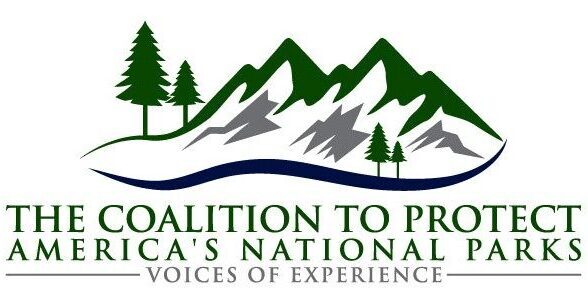COALITION TO PROTECT AMERICA’S NATIONAL PARKS
NATURAL RESOURCES DEFENSE COUNCIL
ROCKY MOUNTAIN WILD
THE WILDERNESS SOCIETY
September 2, 2025
U.S. Department of the Interior, Director (630)
Bureau of Land Management
1849 C St. NW, Room 5646
Washington, D.C. 20240
Attention: 1004-AF40
Re: Comments on “Revision to Regulations Regarding Onshore Oil and Gas
Leasing; General” (BLM-2025-0137; A2407-014-004-065516; #O2412-014-
004-047181.1)
To Whom It May Concern:
Please accept these comments from the undersigned organizations on the direct final rule (FR), “Revision to Regulations Regarding Onshore Oil and Gas Leasing; General,” issued by the Bureau of Land Management (BLM) on August 1, 2025.
The use of an FR in this context contravenes the Administrative Procedure Act (APA), ignores long-established procedures on notice and comment rulemaking, and undermines the role of public participation. As described below, the rescission is based on a faulty premise and will have serious unintended consequences. Moreover, BLM’s reliance on the APA’s “good cause” exception misunderstands the relevant standard, which is not whether the rescinded rule is determined to be unnecessary, but rather whether notice and comment is determined to be unnecessary.1See Mack Trucks, Inc. v. EPA, 682 F.3d 87 (D.C. Cir. 2012); Ronald M. Levin, Direct Final Rulemaking, 64 GEO. WASH. L. REV. 1, 12 (1995); Ronald M. Levin, More on Direct Final Rulemaking: Streamlining, Not Corner-Cutting, 51 ADMIN. L. REV. 757, 763-64 (1999); Mark Squillace, Best Practices for Agency Use of the Good Cause Exemption for Rulemaking, 15 (report to the Admin. Conf. of the U.S.) (Dec. 4, 2024), https://www.acus.gov/sites/default/files/documents/Best%20Practices%20for%20Agency%20Use%20of%20the%20Good%20Cause%20Exemption%20for%20Rulemaking%20%28Final%20Report%29.pdf
When the good cause exception applies because the notice and comment procedure is determined to be “unnecessary,” federal agencies may issue an FR. The Administrative Conference of the United States has clarified that “direct final rulemaking is a technique for expediting the issuance of noncontroversial rules.”2Admin. Conf. of the U.S., Recommendation S5-4, Procedures for Noncontroversial and Expedited Rulemaking, https://www.acus.gov/document/procedures-noncontroversial-and-expedited-rulemaking In other words, an FR is only appropriate when it involves “a minor rule in which the public is not particularly interested.”3Texaco, Inc. v. FPC, 412 F.2d 740, 743, n.6 (3d Cir. 1969); see also South Carolina ex re. Patrick v. Block, 558 F. Supp. 1004, 1016 (D.S.C. 1983). Another court, speaking more generally about the good cause exemption, has noted that this exemption should be “narrowly construed and only reluctantly countenanced.” Tennessee Gas Pipeline Co. v. FERC, 969 F.2d 1141, 1144 (D.C. Cir. 1992). BLM’s FR fails this test because it involves changes to and interpretations of long-standing substantive limitations on federally authorized oil and gas leasing, an environmentally impactful activity in which the public and industry have substantial interests.4See, e.g., Center for Western Priorities, Analysis: Public comments overwhelmingly support BLM oil and gas rule (Sept. 26, 2023) (noting that BLM received over 260,000 comments on BLM’s 2023 proposed oil and gas leasing rule), https://westernpriorities.org/2023/09/analysis-public-comments- overwhelmingly-support-blm-oil-and-gas-rule/. For similar reasons, BLM cannot (and does not appear to) rely on notice and comment being impracticable or contrary to the public interest under the good cause exception. To the contrary, public comment is entirely practical, necessary, and in the public interest. Under these circumstances, the APA guarantees the public an opportunity to comment. Under these circumstances, the APA guarantees the public an opportunity to comment.
Upon receipt of these significant adverse comments, BLM must withdraw the DFR before the effective date.5See Office of the Federal Register, A Guide to the Rulemaking Process, 9, https://uploads.federalregister.gov/uploads/2013/09/The-Rulemaking-Process.pdf; Squillace, supra at 29 (“If the agency receives significant adverse comments, it has two options. It can either withdraw the rule or publish a regular proposed rule that is open for public comment. In either case, the agency should promptly publish notice of its decision in the Federal Register so that the public knows whether the rule has gone into effect.”).
Ben Tettlebaum (on behalf of the below-listed parties)
Director & Senior Staff Attorney
The Wilderness Society
1801 Pennsylvania Ave NW, 2nd Floor
Washington, D.C. 20006
bt*********@*ws.org
(720) 647-9568
Phil Francis Chair
Coalition to Protect America’s National Parks
2 Massachusetts Ave NE Unit 77436
Washington, DC 20013
(202) 819-8622
Josh Axelrod
Senior Policy Advocate
Natural Resources Defense Council
1152 15th St, NW, Suite 300
Washington, D.C. 20005
ja******@**dc.org
(202) 289-2379
Alison Gallensky
Conservation Geographer, Leadership Team
Rocky Mountain Wild
Denver, Colorado al****@***************ld.org
(303) 546-0214 x 9
